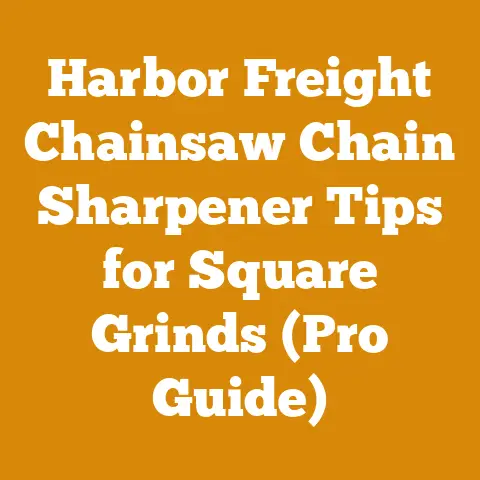Bandit 200 Chipper Specs (5 Pro Tips for Efficient Chipping)
Bandit 200 Chipper Specs: 5 Pro Tips for Efficient Chipping and Budgeting Your Wood Processing
Investing in a wood chipper, especially a robust machine like the Bandit 200, is a significant decision for anyone involved in tree care, land clearing, or even large-scale firewood production. I remember the first time I saw a Bandit 200 in action – the sheer power and efficiency were impressive. But, like any serious piece of equipment, understanding its capabilities, limitations, and the associated costs is crucial before taking the plunge. This article dives deep into the Bandit 200 chipper specs, explores five pro tips for maximizing its efficiency, and most importantly, helps you budget effectively for your wood processing needs.
Understanding the Bandit 200 Chipper: A Deep Dive into Specs
Before we talk about efficiency and cost, let’s get familiar with the Bandit 200. This is a popular and versatile drum-style chipper known for its power and reliability. Knowing its specifications is the first step towards understanding its capabilities and how it fits into your operation.
- Chipping Capacity: Typically, the Bandit 200 boasts a chipping capacity of around 12 inches in diameter. This means it can handle a considerable volume of branches and smaller trees. However, it’s important to note that this is a maximum capacity. Real-world performance can vary depending on wood species, moisture content, and the sharpness of your chipper knives.
- Engine Options: The Bandit 200 usually comes with a range of engine options, both gasoline and diesel, from manufacturers like Caterpillar, John Deere, and Kubota. Horsepower ranges from approximately 80 to 175 horsepower. The engine you choose will directly impact fuel consumption and overall chipping performance. A more powerful engine will obviously handle larger material and higher volumes more easily, but it will also consume more fuel.
- Feed System: The feed system is critical for efficiency. The Bandit 200 typically features a powerful hydraulic feed system with dual horizontal feed rollers. This system pulls material into the chipper drum with significant force. Look for models with adjustable feed speeds and down pressure to optimize performance for different types of wood.
- Chipper Drum: The drum is the heart of the chipper. It’s a large, rotating cylinder with knives mounted on its surface. The Bandit 200’s drum is designed for efficient chipping and discharge. Drum size and knife configuration can vary slightly depending on the model year and customization.
- Discharge System: The discharge chute is responsible for directing the chipped material away from the machine. The Bandit 200 typically has a rotating discharge chute that allows you to direct the chips where you need them. Hydraulic rotation is a common feature, allowing for easy adjustment.
- Weight and Dimensions: The Bandit 200 is a substantial piece of equipment. Weight can range from 6,000 to 10,000 pounds or more, depending on the engine and options. It’s important to consider the weight and dimensions when planning for transportation and site access.
- Hydraulic System: The hydraulic system powers the feed rollers, discharge chute rotation, and other functions. A well-maintained hydraulic system is essential for reliable operation.
- Safety Features: Safety is paramount. The Bandit 200 comes equipped with various safety features, including a feed stop bar, emergency shut-off switches, and guarding around moving parts. Always ensure these features are functioning correctly before operating the chipper.
5 Pro Tips for Efficient Chipping with the Bandit 200
Maximizing the efficiency of your Bandit 200 chipper isn’t just about running it at full throttle. It’s about understanding how to optimize its performance for different materials and situations. These tips are gleaned from my own experiences and observations in the field.
- Knife Maintenance is Key: Dull chipper knives are the enemy of efficiency. They require more power to cut through wood, leading to increased fuel consumption and reduced chipping speed. I’ve seen firsthand how sharpening knives regularly can dramatically improve chipping performance. Invest in a good knife sharpener and develop a consistent sharpening schedule. A good rule of thumb is to sharpen or replace knives after every 8-10 hours of use, or sooner if you notice a decrease in performance or excessive vibration. Keep an eye on the knife pockets, too; if they are worn, your knives won’t sit properly, reducing chipping efficiency and potentially causing damage.
- Optimize Feed Speed and Down Pressure: The Bandit 200’s hydraulic feed system allows you to adjust the feed speed and down pressure of the feed rollers. Experiment with these settings to find the optimal balance for different types of wood. For smaller, lighter branches, you may need to increase the down pressure to prevent them from bouncing around. For larger, denser logs, you may need to slow down the feed speed to avoid overloading the chipper. I’ve found that a slightly slower feed speed often results in a more consistent chip size and reduces the strain on the engine.
- Sort Your Material: Taking the time to sort your material before chipping can significantly improve efficiency. Separate branches from logs, and remove any large knots or debris. This will prevent jams, reduce wear and tear on the chipper, and produce a cleaner chip. I once worked on a land clearing project where we didn’t sort the material properly, and we spent hours clearing jams and dealing with damaged knives. The lesson learned was invaluable.
- Proper Engine Maintenance: A well-maintained engine is essential for reliable chipping. Follow the manufacturer’s recommendations for oil changes, filter replacements, and other maintenance tasks. Regularly check the engine’s cooling system to prevent overheating. Overheating can lead to decreased performance and even engine damage. I always keep a detailed maintenance log for all my equipment, and I recommend you do the same.
- Consider Wood Species and Moisture Content: Different wood species have different chipping characteristics. Softwoods like pine and fir are generally easier to chip than hardwoods like oak and maple. Green wood is also easier to chip than dry wood. Adjust your feed speed and down pressure accordingly. If you’re chipping dry hardwoods, you may need to slow down the feed speed and increase the down pressure. Seasoned wood can be more brittle and may require sharper knives. I’ve also noticed that frozen wood can be particularly challenging to chip, so avoid chipping frozen wood if possible.
Budgeting for Your Wood Processing Needs: A Detailed Cost Breakdown
Now, let’s get down to brass tacks: the cost of owning and operating a Bandit 200 chipper. This is where things can get complex, as there are numerous factors to consider. I’ll break down the costs into several categories:
1. Purchase Price or Rental Costs:
- New Bandit 200: A new Bandit 200 can range in price from $50,000 to $100,000 or more, depending on the engine, options, and dealer. This is a significant investment, so it’s important to carefully consider your needs and budget before making a purchase.
- Used Bandit 200: A used Bandit 200 can be a more affordable option. Prices can range from $20,000 to $60,000 or more, depending on the age, condition, and hours of use. Be sure to thoroughly inspect any used chipper before purchasing it. Check for signs of wear and tear, and have a qualified mechanic inspect the engine and hydraulic system. I’ve bought used equipment before, and the key is due diligence.
- Rental Costs: Renting a Bandit 200 can be a good option if you only need it for occasional use. Rental rates typically range from $300 to $600 per day, or $1,000 to $2,000 per week. Rental costs can vary depending on the location, the dealer, and the availability of the chipper.
Data Point: According to data from EquipmentWatch, the average rental rate for a 12-inch capacity wood chipper in the United States is approximately $450 per day.
2. Fuel Costs:
Fuel costs are a significant expense, especially if you’re using the chipper frequently. Fuel consumption will vary depending on the engine size, the type of wood you’re chipping, and the operating conditions.
- Estimating Fuel Consumption: A good rule of thumb is to estimate fuel consumption at 4 to 8 gallons per hour for a diesel engine and 6 to 12 gallons per hour for a gasoline engine. However, this is just an estimate. It’s important to track your actual fuel consumption over time to get a more accurate picture.
- Fuel Price Fluctuations: Fuel prices can fluctuate significantly, so it’s important to factor this into your budget. Keep an eye on fuel prices in your area and consider purchasing fuel in bulk to save money. I always try to buy fuel when prices are low and store it in a safe and secure location.
- Reducing Fuel Consumption: There are several things you can do to reduce fuel consumption. Keep your chipper knives sharp, optimize your feed speed and down pressure, and avoid idling the engine unnecessarily. Proper maintenance can also help improve fuel efficiency.
Example: Let’s say you’re using a Bandit 200 with a diesel engine that consumes 6 gallons of fuel per hour. If you’re running the chipper for 8 hours per day, and the price of diesel is $4.00 per gallon, your daily fuel cost would be $192 (6 gallons/hour x 8 hours/day x $4.00/gallon).
3. Maintenance and Repair Costs:
Maintenance and repair costs are another significant expense. The Bandit 200 is a robust machine, but it will require regular maintenance to keep it running smoothly.
- Routine Maintenance: Routine maintenance tasks include oil changes, filter replacements, knife sharpening, and lubrication. These tasks should be performed according to the manufacturer’s recommendations. I recommend developing a detailed maintenance schedule and sticking to it.
- Unexpected Repairs: Unexpected repairs can be costly, so it’s important to be prepared for them. Keep a supply of spare parts on hand, and have a qualified mechanic available to perform repairs. Regular inspections can help identify potential problems before they become major issues.
- Cost of Parts: The cost of parts can vary depending on the part and the supplier. It’s always a good idea to shop around for the best prices. Consider purchasing parts in bulk to save money.
- Labor Costs: If you’re not able to perform repairs yourself, you’ll need to factor in labor costs. Mechanic rates can vary depending on the location and the experience of the mechanic.
Data Point: According to industry estimates, the average annual maintenance and repair cost for a wood chipper is approximately 5% to 10% of the purchase price. So, for a Bandit 200 that costs $75,000, you can expect to spend $3,750 to $7,500 per year on maintenance and repairs.
4. Labor Costs:
If you’re hiring employees to operate the chipper, you’ll need to factor in labor costs. Labor costs will vary depending on the location, the experience of the employees, and the prevailing wage rates.
- Hourly Wages: Hourly wages for chipper operators typically range from $18 to $30 per hour, depending on experience and location.
- Benefits: In addition to hourly wages, you’ll also need to factor in the cost of benefits, such as health insurance, paid time off, and retirement contributions.
- Workers’ Compensation Insurance: Workers’ compensation insurance is required in most states and provides coverage for employees who are injured on the job. The cost of workers’ compensation insurance will vary depending on the risk associated with the job.
- Payroll Taxes: You’ll also need to pay payroll taxes, such as Social Security and Medicare taxes.
Example: Let’s say you’re hiring two employees to operate the chipper, and you’re paying them $25 per hour. If they’re working 8 hours per day, your daily labor cost would be $400 (2 employees x $25/hour x 8 hours/day). You’ll also need to add in the cost of benefits, workers’ compensation insurance, and payroll taxes.
5. Transportation Costs:
If you’re transporting the chipper to different job sites, you’ll need to factor in transportation costs. These costs can include fuel, mileage, tolls, and permits.
- Truck and Trailer: You’ll need a truck and trailer that is capable of hauling the chipper. The cost of the truck and trailer will depend on the size and type of vehicle.
- Fuel Costs: Fuel costs for transporting the chipper can be significant, especially if you’re traveling long distances.
- Mileage: You’ll need to track your mileage for tax purposes.
- Tolls: Tolls can add up quickly, especially if you’re traveling on toll roads.
- Permits: You may need to obtain permits to transport the chipper, especially if it exceeds certain weight or size limits.
6. Insurance Costs:
You’ll need to insure the chipper against damage, theft, and liability. Insurance costs will vary depending on the value of the chipper, the coverage you choose, and your insurance provider.
- Property Insurance: Property insurance covers damage to the chipper from fire, theft, vandalism, and other perils.
- Liability Insurance: Liability insurance covers you if you’re sued for damages caused by the chipper.
- Commercial Auto Insurance: Commercial auto insurance covers you if you’re involved in an accident while transporting the chipper.
7. Permitting and Regulatory Compliance:
Depending on your location and the type of work you’re doing, you may need to obtain permits and comply with various regulations.
- Air Quality Permits: If you’re operating the chipper in an area with strict air quality regulations, you may need to obtain an air quality permit.
- Noise Ordinances: Many municipalities have noise ordinances that limit the hours during which you can operate noisy equipment.
- Environmental Regulations: You may need to comply with environmental regulations regarding the disposal of chipped material.
8. Depreciation:
Depreciation is the decrease in value of the chipper over time. Depreciation is a non-cash expense, but it’s important to factor it into your budget.
- Straight-Line Depreciation: Straight-line depreciation is the simplest method of calculating depreciation. It involves dividing the purchase price of the chipper by its useful life.
- Accelerated Depreciation: Accelerated depreciation methods allow you to deduct a larger portion of the depreciation expense in the early years of the chipper’s life.
Example: Let’s say you purchased a Bandit 200 for $75,000, and you estimate its useful life to be 10 years. Using straight-line depreciation, your annual depreciation expense would be $7,500 ($75,000 / 10 years).
Case Study: Budgeting for a Small-Scale Firewood Operation Using a Bandit 200
Let’s look at a hypothetical case study to illustrate how to budget for a small-scale firewood operation using a Bandit 200.
Scenario: You’re planning to start a small-scale firewood operation, and you’re considering purchasing a used Bandit 200 chipper to process the smaller branches and tops that are left over after logging operations. You plan to sell the chipped material as mulch or animal bedding.
Assumptions:
- Used Bandit 200 purchase price: $35,000
- Engine: Diesel
- Fuel consumption: 6 gallons per hour
- Hours of operation per week: 20
- Fuel price: $4.00 per gallon
- Hourly wage for operator: $20
- Benefits and payroll taxes: 25% of hourly wage
- Annual maintenance and repair costs: 7% of purchase price
- Annual insurance costs: $1,500
- Useful life of chipper: 10 years
- Straight-line depreciation
Cost Breakdown:
- Capital Costs:
- Used Bandit 200: $35,000
- Annual Operating Costs:
- Fuel: 6 gallons/hour x 20 hours/week x 52 weeks/year x $4.00/gallon = $24,960
- Labor: $20/hour x 20 hours/week x 52 weeks/year = $20,800
- Benefits and Payroll Taxes: $20,800 x 0.25 = $5,200
- Maintenance and Repairs: $35,000 x 0.07 = $2,450
- Insurance: $1,500
- Depreciation: $35,000 / 10 years = $3,500
- Total Annual Costs: $24,960 + $20,800 + $5,200 + $2,450 + $1,500 + $3,500 = $58,410
Revenue:
To determine if the operation is profitable, you need to estimate your revenue. Let’s assume you can sell the chipped material for $20 per cubic yard, and you can produce 10 cubic yards per hour.
- Annual Revenue: 10 cubic yards/hour x 20 hours/week x 52 weeks/year x $20/cubic yard = $208,000
Profitability:
- Annual Profit: $208,000 – $58,410 = $149,590
In this scenario, the firewood operation would be highly profitable. However, it’s important to note that this is just a hypothetical example. Actual costs and revenues will vary depending on your specific circumstances.
Tips for Cost Optimization and Budget Management
Here are some practical tips for optimizing your costs and managing your budget effectively:
- Shop Around for the Best Prices: Don’t settle for the first price you get. Shop around for the best prices on equipment, parts, fuel, and insurance.
- Negotiate with Suppliers: Don’t be afraid to negotiate with suppliers. You may be able to get a better price if you’re willing to buy in bulk or commit to a long-term contract.
- Perform Routine Maintenance: Performing routine maintenance can help prevent costly repairs down the road.
- Track Your Expenses: Keep track of all your expenses so you can see where your money is going.
- Create a Budget: Create a budget and stick to it.
- Monitor Your Performance: Monitor your performance regularly to see if you’re meeting your goals.
- Seek Professional Advice: If you’re not sure how to manage your finances, seek professional advice from an accountant or financial advisor.
- Consider Leasing vs. Buying: Carefully evaluate whether leasing or buying the Bandit 200 is more cost-effective for your operation. Leasing may offer lower upfront costs and predictable monthly payments, while buying allows you to build equity and potentially benefit from tax deductions.
- Explore Government Incentives: Research any government incentives or grants that may be available for purchasing or operating wood processing equipment. These programs can help offset some of your costs.
Calculating Volume of Logs and Firewood
Understanding how to calculate the volume of logs and firewood is essential for accurate budgeting and pricing. Here are some basic formulas:
-
Board Feet: Board feet are a unit of measure used for lumber. One board foot is equal to 144 cubic inches (12 inches x 12 inches x 1 inch). To calculate the board feet in a log, you can use the Doyle Log Scale, which is a commonly used formula in the United States:
- Board Feet = (Diameter – 4)² x Length / 16, where diameter is in inches and length is in feet.
- Cords: A cord is a unit of measure used for firewood. A standard cord is a stack of wood that is 4 feet high, 4 feet wide, and 8 feet long, for a total volume of 128 cubic feet. However, the actual amount of solid wood in a cord can vary depending on the size and shape of the pieces.
- Calculating Cord Volume from Log Volume: To estimate the number of cords that can be produced from a given volume of logs, you can use a conversion factor. A common conversion factor is that 1,000 board feet of logs will yield approximately 1.5 to 2 cords of firewood. However, this can vary depending on the wood species and the size of the logs.
Estimating Drying Time for Firewood
Drying or seasoning firewood is crucial for efficient burning. Green wood contains a high moisture content, which reduces its heat output and increases the amount of smoke it produces.
- Moisture Content: The moisture content of wood is the percentage of its weight that is water. Green wood can have a moisture content of 50% or more, while seasoned firewood should have a moisture content of 20% or less.
- Factors Affecting Drying Time: The drying time for firewood depends on several factors, including the wood species, the size of the pieces, the climate, and the stacking method.
- Estimating Drying Time: As a general rule, it takes about 6 to 12 months for firewood to dry properly. However, this can vary depending on the factors mentioned above. Softwoods typically dry faster than hardwoods. Smaller pieces dry faster than larger pieces. Warm, dry climates are more conducive to drying than cool, humid climates.
- Stacking Method: The way you stack your firewood can also affect the drying time. Stack the wood in a single row, with the pieces oriented in the same direction. This will allow air to circulate freely around the wood. Elevate the wood off the ground to prevent it from absorbing moisture. Cover the top of the stack to protect it from rain and snow, but leave the sides open to allow for ventilation.
Challenges Faced by Small-Scale Loggers and Firewood Suppliers
Small-scale loggers and firewood suppliers face a number of challenges, including:
- Fluctuating Timber Prices: Timber prices can fluctuate significantly, making it difficult to predict revenue.
- High Equipment Costs: Logging and firewood processing equipment can be expensive.
- Labor Shortages: Finding and retaining qualified employees can be challenging.
- Regulatory Compliance: Complying with environmental regulations can be costly and time-consuming.
- Competition: The market for firewood can be competitive.
- Seasonality: The demand for firewood is seasonal, with most sales occurring in the fall and winter.
- Weather: Weather conditions can significantly impact logging and firewood processing operations.
Actionable Takeaways and Next Steps
Planning a wood processing or firewood preparation project can seem daunting, but with careful budgeting and attention to detail, you can increase your chances of success. Here are some actionable takeaways and next steps:
- Define Your Goals: Clearly define your goals for the project. What are you trying to achieve? How much wood do you need to process? What is your budget?
- Research Your Options: Research your options for equipment, materials, and labor. Compare prices and quality.
- Create a Detailed Budget: Create a detailed budget that includes all of your expected costs.
- Track Your Expenses: Track your expenses carefully to make sure you’re staying within budget.
- Monitor Your Performance: Monitor your performance regularly to see if you’re meeting your goals.
- Adjust Your Plan as Needed: Be prepared to adjust your plan as needed. Things don’t always go as planned, so it’s important to be flexible.
- Seek Professional Advice: Don’t be afraid to seek professional advice from experts in the field.
By following these tips, you can increase your chances of success in your wood processing or firewood preparation project. Remember, the key is to plan carefully, track your expenses, and monitor your performance. With a little bit of effort, you can achieve your goals and enjoy the fruits of your labor.
Conclusion: Mastering the Art and Science of Wood Processing
Wood processing and firewood preparation are both an art and a science. It requires a combination of knowledge, skill, and hard work. By understanding the principles of wood processing, budgeting, and cost management, you can increase your efficiency, reduce your costs, and achieve your goals. Investing in equipment like the Bandit 200 is a serious decision, but with proper planning and execution, it can be a valuable asset for your operation. Remember to always prioritize safety, maintain your equipment properly, and stay informed about the latest industry trends. With dedication and perseverance, you can master the art and science of wood processing and build a successful business.





